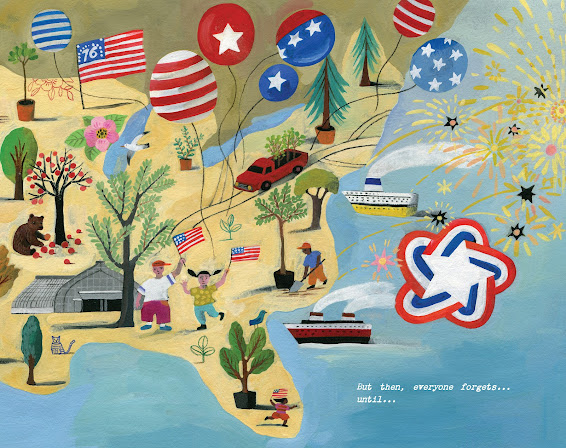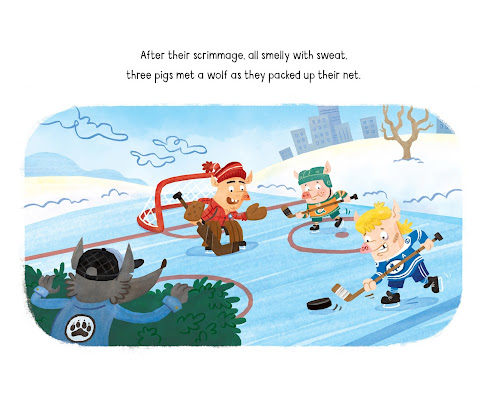Long-time readers of my blog may remember that I am one of Nikki Grimes' many fans. In the past, I reviewed Ordinary Hazards, Between the Lines, and Words with Wings. Nikki's poetry sings and she captures the conflicts and emotions of adolescents beautifully.
Garvey's Choice (WordSong, 2016) is no different. Except...it is different. Each of the 100+ poems which tell Garvey's story is written in tanka. WOW. At the back of the book Nikki mentions that she challenged herself to write a novel using this Japanese form of poetry. All I can say is that the result is lyrical, impressive, and AMAZING.
Review
From page one, readers learn that part of Garvey's story is his problems with his dad. The sparse yet evocative language also hints at how he handles his pain.
It Figures
When I was seven
and crazy for Mr. Spock,
a Star Trek lunch box
was all I craved. Instead, Dad
bought one blaring the logo.
of some football team
I'd never even heard of
I shoved that thing in
the coal black of my closet,
then celebrated with cake. (p.1)
Garvey's best friend is Joe with whom he shares a love for astronomy, chess, and knock-knock jokes.
One time after being dissed again by his father for not wanting to play basketball, Joe calls.
Phone Call
All evening long I
try tucking in my sadness,
but it keeps getting
snagged on my voice when I speak.
Joe catches it when he calls.
"Hey! What's up? Joe asks.
Should I tell him? "Nothing you
haven't heard before.
I wish my dad could see me.
That sounds crazy, huh?"
"Not really," says Joe.
"I get it. Seriously.
But you've got a dad.
Mine skipped out long time ago."
Why'd I open my big mouth?
Joe shrugs off his hurt.
"Knock, knock!" he says. "Not now, Joe."
"Come on, man! Knock, knock."
I give in. "Who's there?" "Your friend,
Joe, who's always here for you." (p. 19)
At school, Garvey is teased for being overweight. Nikki tucks small references to Garvey finding refuge in music. Listening to his music and his dad's music, and humming (to drown out teasing) are all part of how Garvey copes.
Along the way, Garvey learns some things about his father's love for music and how his father used football to bring the two of them together. The musical insights and details about his father slip in and foreshadow the climax.
Morning Classes
Blue notes, sad as me,
wail their way from a classroom
I've never been in.
"Chorus," says Joe when I ask.
"It's a new club. You should join.
You're always singing,
or at least humming out loud."
"Yeah, but I don't know."
"Look," says Joe, "your voice is choice.
You should let others hear it." (p. 46)
Garvey makes a new friend in chorus. Manny is an albino who wants to be a chef.
Advice
...
"I was wondering
how you stand kids teasing you."
"I'm honest," he says.
"I've got albinism. Fact.
I look strange. No changing that.
Is there more to me?
Sure. Kids yell 'albino boy.'
I don't turn around.
Choose the name you answer to.
No one can do that but you. (p. 66)
Changes begin to happen.
When I Sing
When I sing, my heart
floats full and light, as if I'm
a balloon of song,
rising with every lyric,
reaching the edges of space. (p. 75)
Spring Thaw
Peeled myself from bed
for the morning rush to school
(Better beat the bell!)
Belted a blue-jean surprise:
loose weight by nearly one size!
Round still, but that's fine.
Feeling good outside and in.
Maybe I'm not thin
But skinny isn't perfect.
The perfect size is happy. (p. 99)
The climax is Nikki Grimes perfect.
The Talk
"Son, I should tell you,
I used to sing in a band,"
Dad says in the voice
he saves for secrets. I smile,
and pretend that I'm surprised.
"Really? When?" I ask.
"Oh, it was a long while back..."
That's how it began--
the longest conversation
I've ever had with my dad. (p. 104)



































